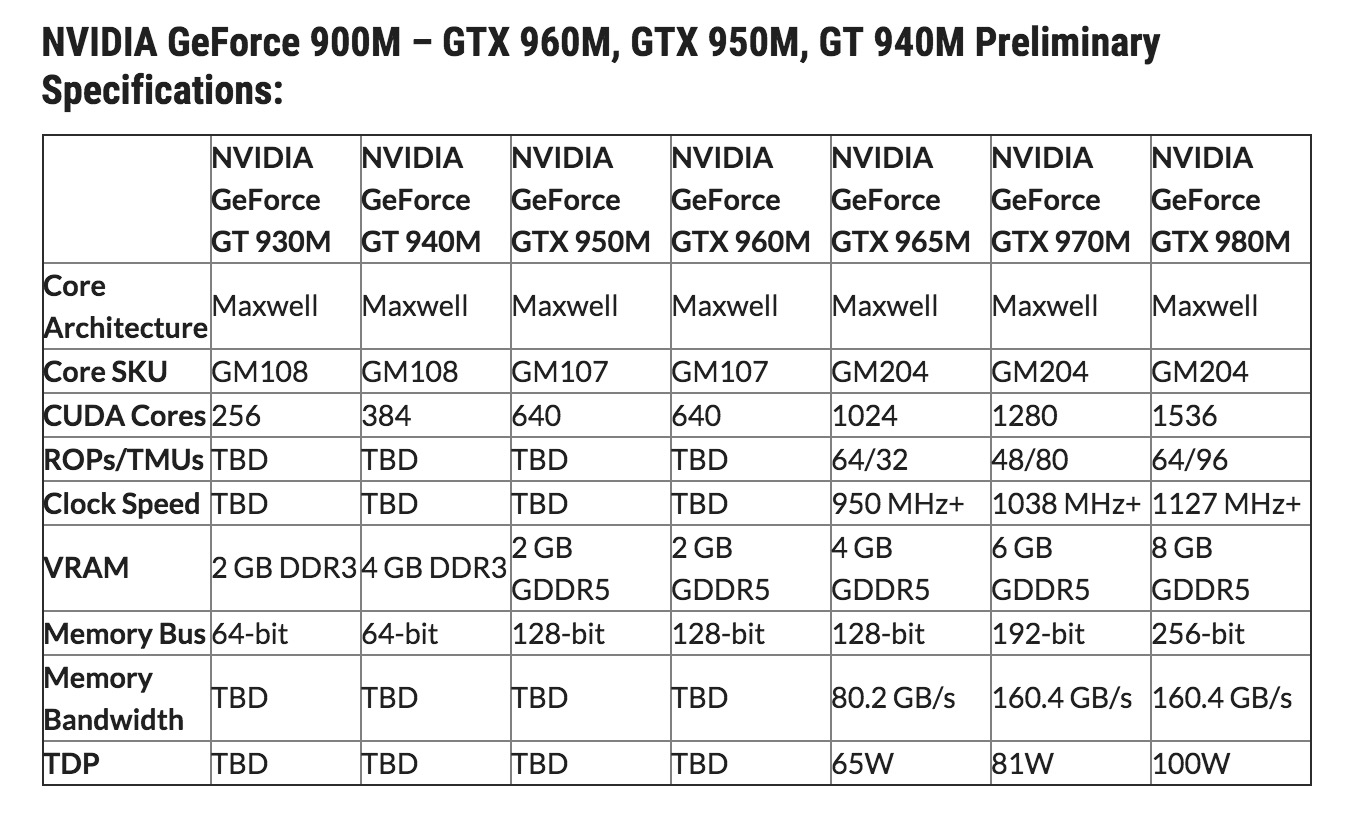

NVIDIA’s product pages for the three lower tier GPUs reveal precious little in the way of specifications all we know is that the parts are DirectX 12 capable and that the 920M is rated as being ~3X the performance of Intel’s HD 4400 while the 930M and 940M are 3.5X and 4X the performance rating of the HD 4400. Even so, the newer parts are likely only 10% (give or take) faster than the previous generation parts.

Keep in mind that both the 850M and 860M are marketed with "up to xxx MHz" language where NVIDIA has now switched to advertising the base clock (no "up to"). 960M meanwhile represents a minor bump in clock speeds over GTX 860M, going from 1029MHz + Boost to 1096MHz + Boost the RAM stays the same with GDDR5-5000 providing 80GB/s of bandwidth.
#Nvidia geforce 930m vs gtx 960m full
Interestingly, the clocks and core configurations mean that potentially the GTX 950M is actually a bit slower than GTX 850M (640 cores at 936MHz + Boost compared to 914MHz + Boost), but NVIDIA doesn't disclose the full range of base clocks and Boost clocks so the 950M will hit higher clocks on average compared to 850M.
#Nvidia geforce 930m vs gtx 960m 1080p
While the additional bandwidth of GDDR5 may not matter too much at lower resolutions, we’ve seen in the past that it can have a significant impact on performance at 1080p and medium or higher settings. The GTX 950M has 640 CUDA cores running at 914MHz (+ Boost), and it can be paired with either DDR3-2000 (yuck!) or GDDR5-5000, both using a 128-bit interface. The new GeForce GTX 960M and 950M end up being clock speed bumps from the existing GTX 860M/850M, though this time the 960M is purely Maxwell based and there’s no Kepler alternative. Considering the GTX 965M has 1024 CUDA cores many felt it would use GM206 as well, but that didn’t happen in a similar fashion, those expecting (hoping) GTX 960M and 950M would use a derivative of GM206 are also going to be disappointed and it continues to use the GM107 chip. NVIDIA launched the high-end GM204 back in September/October last year and brought out the mobile GTX 970M and 980M using the chips, and they more recently launched the desktop GTX 960 using a new GM206 part with up to 1024 CUDA cores. The actual pixel fill rate is also dependant on lots of other factors, most notably the memory bandwidth of the card - the lower the bandwidth is, the lower the ability to get to the maximum fill rate.Today NVIDIA officially launched their latest mobile GPUs, the GTX 960M and 950M on a quieter note, the 940M, 930M, and 920M also showed up. ROPs (Raster Operations Pipelines - also called Render Output Units) are responsible for drawing the pixels (image) on the screen. The figure is calculated by multiplying the amount of Render Output Units by the the card's clock speed. Pixel Rate: Pixel rate is the maximum amount of pixels the graphics card could possibly write to its local memory in one second - measured in millions of pixels per second. It is measured in millions of texels applied per second.


The better this number, the better the graphics card will be at texture filtering (anisotropic filtering - AF). This figure is calculated by multiplying the total number of texture units of the card by the core clock speed of the chip. Texel Rate: Texel rate is the maximum number of texture map elements (texels) that can be applied in one second. It especially helps with AA, High Dynamic Range and higher screen resolutions. The higher the memory bandwidth, the better the card will be in general. If the card has DDR RAM, the result should be multiplied by 2 again. The number is calculated by multiplying the card's bus width by its memory clock speed. Memory Bandwidth: Bandwidth is the largest amount of information (measured in MB per second) that can be transferred past the external memory interface in one second.


 0 kommentar(er)
0 kommentar(er)
